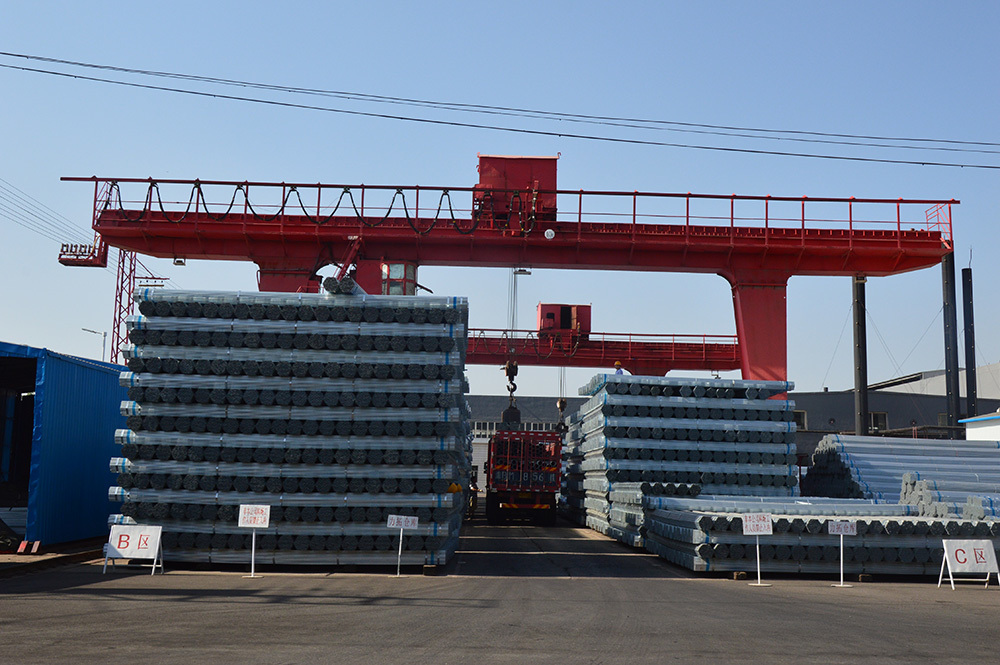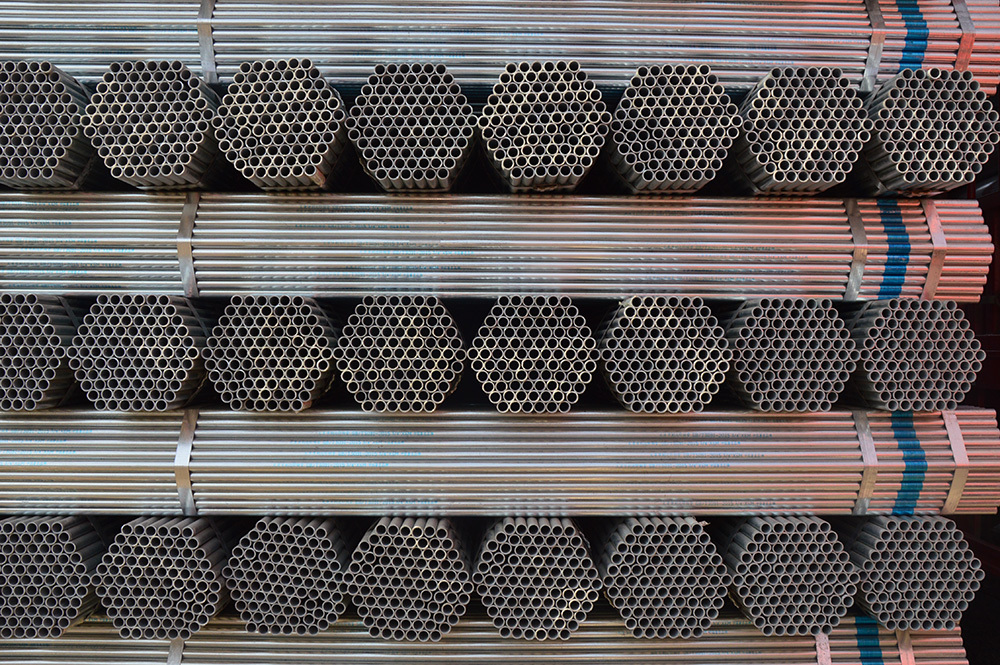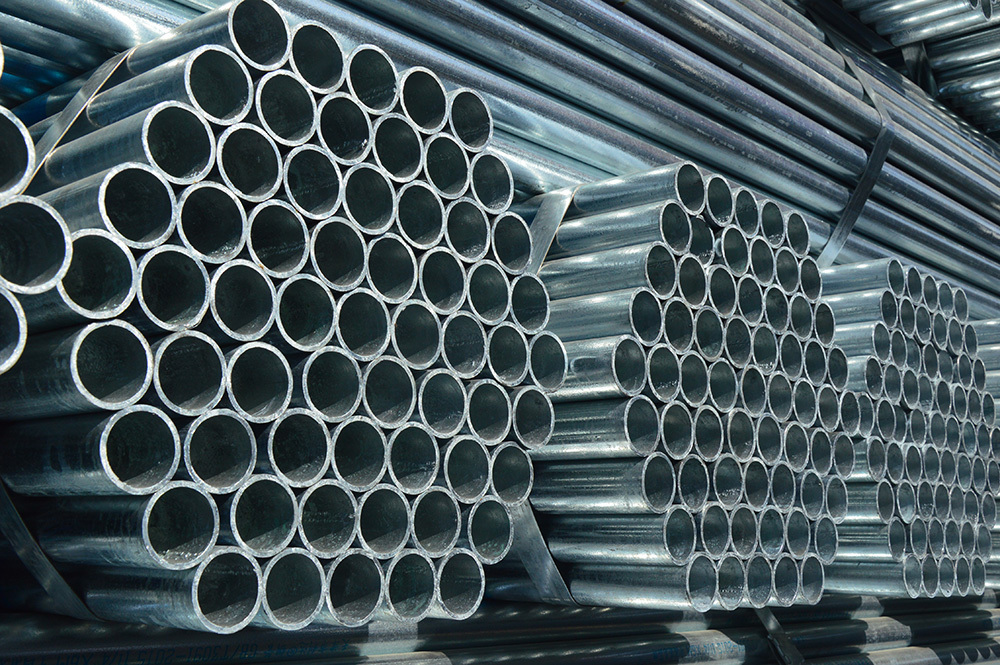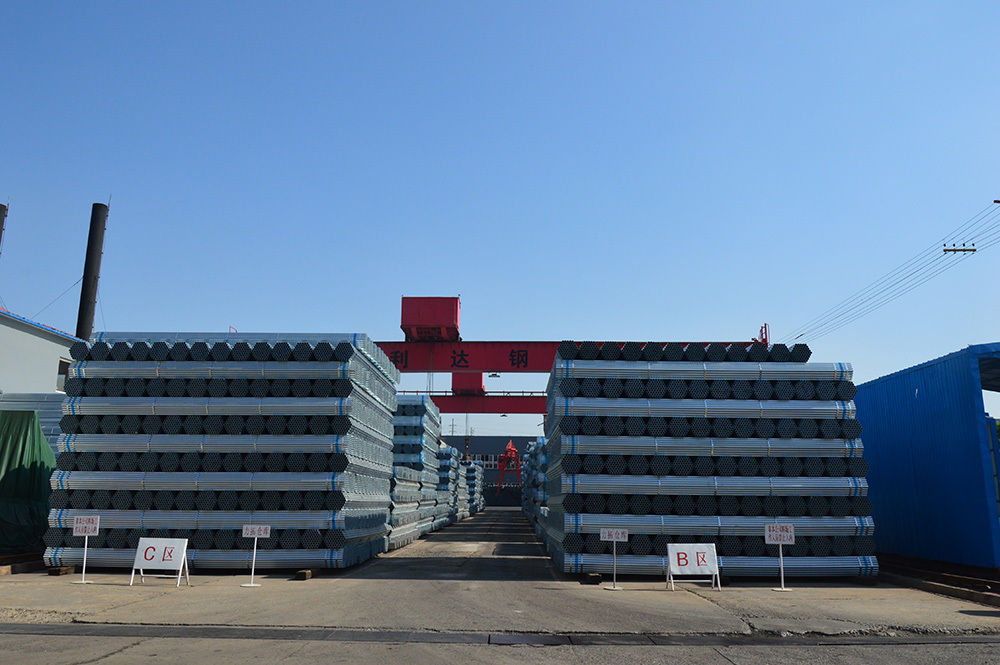"Lida" brand galvanized steel pipe
Key words:
"Lida" brand galvanized steel pipe
Classification:
Product Introduction
Hot-dip galvanized pipe is produced by reacting molten metal with an iron substrate to create an alloy layer, thus combining the substrate and coating. Hot-dip galvanizing first involves pickling the steel pipe to remove iron oxides from the surface. After pickling, the pipe is cleaned in a solution of ammonium chloride or zinc chloride, or a mixture of both, before being sent to the hot-dip galvanizing tank. Hot-dip galvanizing features a uniform coating with strong adhesion and a long service life. The steel pipe substrate undergoes a complex physical and chemical reaction with the molten plating solution, forming a corrosion-resistant, tightly bonded zinc-iron alloy layer. The alloy layer, pure zinc layer, and steel pipe substrate are integrated into one. Therefore, it has strong corrosion resistance.
1. Grade and Chemical Composition
The grade and chemical composition of the steel used for galvanized steel pipes should comply with the grade and chemical composition of black pipe steel as stipulated in GB 3092.
2. Manufacturing Method
The manufacturing method (furnace welding or electric welding) of black pipes is selected by the manufacturer. Galvanizing uses the hot-dip galvanizing method.
3. Threads and Pipe Fittings
3.1 For galvanized steel pipes delivered with threads, the threads should be machined after galvanizing. The threads should conform to the provisions of YB 822.
3.2 Steel pipe fittings should conform to the provisions of YB 238; malleable cast iron pipe fittings should conform to the provisions of YB 230.
4. Mechanical Properties The mechanical properties of the steel pipe before galvanizing should meet the requirements of GB 3092.
5. Uniformity of Galvanized Coating Galvanized steel pipes should undergo a test for the uniformity of the galvanized coating. The steel pipe sample should not turn red (copper color) after continuous immersion in a copper sulfate solution five times.
6. Cold Bending Test Galvanized steel pipes with a nominal diameter of no more than 50mm should undergo a cold bending test. The bending angle is 90°, and the bending radius is 8 times the outer diameter. During the test, no filler should be used, and the weld of the sample should be placed on the outer or upper side of the bending direction. After the test, there should be no cracks or peeling of the zinc layer on the sample.
7. Hydraulic Test The hydraulic test should be conducted on the black pipe; it can also be replaced by eddy current testing. The test pressure or eddy current testing comparison sample size should conform to the provisions of GB 3092.
The mechanical properties of steel are important indicators to guarantee the final use performance (mechanical properties) of the steel, which depends on the chemical composition and heat treatment process of the steel. In steel pipe standards, according to different usage requirements, tensile properties (tensile strength, yield strength or yield point, elongation) as well as hardness and toughness indicators, and high and low temperature properties required by users are specified.
① Tensile Strength (σb)
During the tensile process of the sample, the maximum force (Fb) it withstands before breaking, divided by the original cross-sectional area (So) of the sample, is called the tensile strength (σb), with the unit of N/mm2 (MPa). It represents the maximum ability of the metallic material to resist destruction under tensile stress. The calculation formula is:
Where: Fb - Maximum force withstood by the sample when broken, N (Newton); So - Original cross-sectional area of the sample, mm2.
② Yield Point (σs)
For metallic materials with yield phenomenon, the stress when the sample continues to elongate without increasing force (remaining constant) during the tensile process is called the yield point. If the force decreases, the upper and lower yield points should be distinguished. The unit of yield point is N/mm2 (MPa).
Upper Yield Point (σsu): The maximum stress before the force first decreases when the sample yields;
Lower Yield Point (σsl): The minimum stress in the yield stage when the initial instantaneous effect is not considered.
The calculation formula for the yield point is:
Where: Fs - Yield force (constant) during the tensile process of the sample, N (Newton); So - Original cross-sectional area of the sample, mm2.
③ Elongation after Fracture (σ)
In the tensile test, the percentage of the increase in length of the gauge length after the sample breaks to the original gauge length is called elongation. It is represented by σ, with the unit of % . The calculation formula is:
Where: L1 - Gauge length of the sample after fracture, mm; L0 - Original gauge length of the sample, mm.
④ Reduction of Area (ψ)
In the tensile test, the percentage of the maximum reduction in the cross-sectional area at the necked-down area after the sample breaks to the original cross-sectional area is called the reduction of area. It is represented by ψ, with the unit of % . The calculation formula is as follows:
Where: S0 - Original cross-sectional area of the sample, mm2; S1 - Minimum cross-sectional area at the necked-down area after the sample breaks, mm2.
⑤ Hardness Indicators
The ability of a metallic material to resist the indentation of a hard object on its surface is called hardness. According to different test methods and application ranges, hardness can be divided into Brinell hardness, Rockwell hardness, Vickers hardness, Shore hardness, microhardness, and high-temperature hardness. For pipe materials, the commonly used ones are Brinell, Rockwell, and Vickers hardness.
A. Brinell Hardness (HB)
A steel ball or hard alloy ball of a certain diameter is pressed into the sample surface with a specified test force (F). After a specified holding time, the test force is removed, and the indentation diameter (L) on the sample surface is measured. The Brinell hardness value is the quotient obtained by dividing the test force by the spherical surface area of the indentation. It is represented by HBS (steel ball), with the unit of N/mm2(MPa).
Notes:
1. Galvanized steel pipes can be used for transporting water, domestic sewage, fuel gas, air, heating steam and other low-pressure fluids, or for structural purposes.
2. Galvanized steel pipes can be connected using welding, threading, flanges, and grooved joints; if the user needs to use a press-fit connector, this must be specified before purchase, and our company will treat it as a special-purpose steel pipe; the steel pipe should not be hard bent, and steel pipes with a nominal diameter of no more than 50mm are allowed to be bent, and the bending radius must be greater than 8 times the diameter of the steel pipe.
3. During installation and use, users should apply appropriate anti-corrosion treatment to the steel pipes according to the project's needs. The outer surface of the galvanized steel pipe must not come into direct contact with building materials containing strong alkalis (such as lime), acids, and salts (sea sand) (the steel pipe must be protected to isolate it from such materials) to prevent corrosion; at the same time, appropriate materials, outer diameter, and wall thickness should be selected according to the project requirements to ensure the strength of the pipeline or structural components; corrosion damage caused by the lack of anti-corrosion or isolation treatment in environments with strong corrosive gases is not the responsibility of our company.
4. Must not be used for high-temperature, high-pressure pipelines such as boilers. Special-purpose steel pipes must be specified before purchase.
5. During the installation and hoisting of steel pipes, handle with care, and avoid violent collisions and scratches to prevent damage to the galvanized layer and affect the corrosion resistance of the steel pipes. Store indoors as much as possible.
6. Steel pipes should be cut using mechanical methods, and the cross-section should be perpendicular to the axis. Allowable deviation: when the pipe diameter is no more than 100mm, the deviation is no more than 1mm; when the pipe diameter is greater than 125mm, the deviation is no more than 1.5mm
Previous:
The next one:
Related Products
Messages
If you are interested in our products, please leave your email, we will contact you as soon as possible, thank you!




